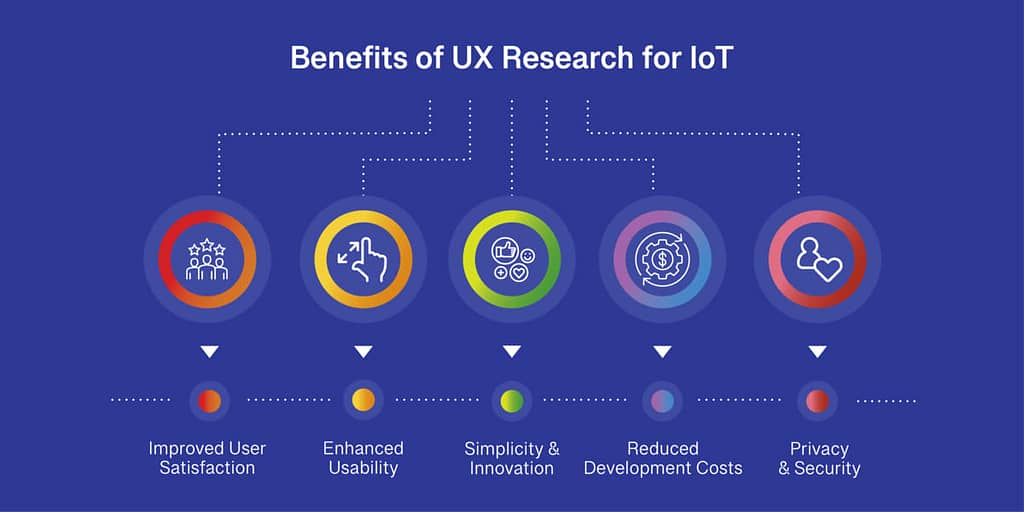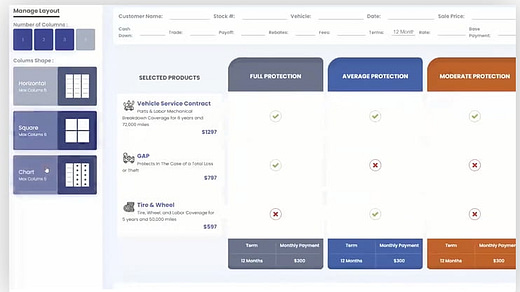Imagine that while you are speaking to your friend via video conference, your answering machine is taking and screening calls in the background. A mobile smartphone next to you is lit up with notification windows that offer alerts for bill payments as well as updates on the most recent flight details for your forthcoming flight. Everyone’s everyday life is impacted by the IoT App Development Company. The moment the alarm buzzes, you are alerted that it is time for the service technicians to come pick up your automobile. With the help of the remote, the garage gate automatically opens, and workers arrive to collect the car, making announcements over the intercom equipped with a camera for facial recognition. Ah! This is the perfect scenario. However, it is clear that touchscreens, smart devices, voice and touch controls, facial recognition, and most crucially a fantastic user experience rule this perfect world.

What exactly is user experience (UX) then?
Attributes like simple usability, attractive aesthetics, technical assistance, ultra-smooth communications, and other similar features are used to define how people engage with a technology, service, or product. All of the functionalities have a link between both the user and the supplier. It should be highlighted that although some businesses strive to consciously influence the customer experience, others simply follow the crowd. The term “user experience” refers to anything that users interact with. The current tendency is to mold and shape customer experience in a way that appeals to, is attractive to, and is practical for the users. The bottom line is good user interaction since it attracts devoted clients and profitable customers.
If an app’s users perceive it to be user-friendly, they are more likely to encourage others to use it as well. According to a Forrester analysis, S&P index-reflecting firms that excel at customer service have a double return on investment. Therefore, businesses are working harder and harder to improve the user experience.
Why do IoT solutions need user experience?
With a compelling user experience, you may include need into your product or design. The ideal method for enhancing IoT in both the consumer and industrial domains is unquestionably user experience. How? It improves user friendliness and makes people happy. A successful user-machine interaction may help your IoT product reach its full potential. A smart IoT user experience design can do this. What other benefits do UX-based IoT solutions offer?
Here are the top three components:
- Outstanding technological capabilities
Advertising and marketing are useless if the technology they promote is subpar. The product speaks at the end. The people won’t believe any products that afterwards come out of your stable if you trumpet up some features of a product and they turn out to be fake, which might hurt you in the long run. The most important source of new business is still word of mouth, which can only happen if the technology is cutting edge, effective, and reliable.
- Excellent Usability
Usability is fundamental to the user experience. The gadget or software should have adequate general usability. From installation to maintenance and outcomes, it must be assured that the gadget or app is appropriate and usable. In addition to ensuring that the product requires less work and time than the item it is replacing, usability should also be excellent. For instance, due to less work, voice recognition has mostly supplanted touch recognition.
- Adherence to and Compatibility with Human Psychology
The fact that UX is all about users is crucial. It ought to take into account user psychology, behaviour, requirements, and efforts. Users must have confidence in the technology and be convinced that it will reduce their work, boost their earnings, and save them time. It is crucial that users put their confidence and faith in the products they select to utilize.
Here, the UX design will make sure that it satisfies the consumers’ demands and expectations far more effectively.

The essential elements for designing the IoT user experience are as follows:
Now that we are aware of how crucial UX may be when creating IoT solutions for consumers, let’s look at some features that are vital for IoT user experience designs and in order to outsourcing development.
- Consistency
When it comes to UX IoT design, one should trust in maintaining consistency with structures and matters. Today’s IoT goods come in a wide variety, which may confuse some consumers. This is why it’s important to constantly aim for unified design components that make it simple to use features even if you have very little product expertise.
- Familiarity
The importance of familiarity should also be high. Whether it’s a smart TV, a wristwatch, or a simple thermostat, the current IoT gadgets offer a wonderful perspective on the user’s routine. The aesthetics of these devices are created to reflect how the user interacts with them. Simply put, even if customers haven’t used any IoT devices, they still feel comfortable using them.
For instance, you would programme a smart thermostat the same way you would a standard one, just much more conveniently. A gadget just has to follow this routine process.
- Simplicity
Speaking of simplicity, keep in mind that it will always be a part of your design. Regardless of the IoT product you are creating, your UX should be straightforward and simple to use. It’s important to provide a service that feels natural and uncomplicated.
For instance, when you arrive home and push a few buttons, your home is already fully lit, the thermostat has begun to warm the space, and your smart TV is smoothly playing your favourite movie at a low level. This is what the Internet of Things (IoT) claims to bring, and this is exactly how it should.
- Privacy and security
IoT survival is predicated on cyber security. It is crucial to address privacy concerns in both the IoT architecture and linked devices. This aspect also has something to do with UI/UX. Users have legitimate concerns about how the data pathways are safeguarded while it is kept in cyberspace. It might be difficult for designers to offer a high level of security without sacrificing the design flow. Such interfaces require UI/UX expertise so you must hire ui ux designers in addition to IoT software development services.
Few additional tips for Your UX IoT research
IoT-based solutions connect physical items wirelessly, bridging the gap between the physical and the digital worlds. Our main goal should be to comprehend the extent of user engagement as these IoT devices might take many different shapes and offer a variety of services.
In order to better comprehend the user-IoT connection, here are a few pointers.
- User studies
You will comprehend how your Internet of Things product design integrates into their lives better the more user research you do. This increases the likelihood of connecting with customers. Before building your product, undertake some user research by posing a few questions.
- Who utilizes your services?
- How are customers going to use your product?
- How will your product help your consumer solve their issue?
– How frequently do people utilise your product?
You may construct a user journey map using the research’s insights, then present it to your IoT design and development team. You may read The Timeless List of UX Deliverables to learn more about UX delivery.
- Consumer contentment
Another suggestion is to maintain client satisfaction. One of the main advantages of a well-designed user experience is a satisfied consumer. Your designs will increase client pleasure and eventually encourage customer loyalty when they are intuitive and individualized.
- Usability evaluation
User testing or usability testing will provide you with an assessment of the product’s quality at the conclusion of your design phase. Before releasing the product to users, you may double-check every aspect and performance and make the necessary adjustments.
- Mapping the customer experience
You may digitally visualize your user’s whole journey with the use of a customer experience journey map. You may build “People Aware” IoT solutions by mapping your user experience using a design thinking process. You can monitor how customers interact with your goods using this. Missed chances can be found, features can be adjusted, and features can be improved just in time.
Conclusion:
It’s crucial to compose at least one issue statement to target your solution after you’ve discovered user pain points. IoT App Development Company services should be used if they are the answer to the issue statements. If it’s not IoT, you should proceed and use the best suitable technology to address the issue.
IoT solutions are not necessary for all issues. However, you may develop useful IoT solutions by carrying out your user research. Keep in mind that conducting qualitative research may be as simple as speaking with a person, and it is undoubtedly worthwhile.




Recent Comments